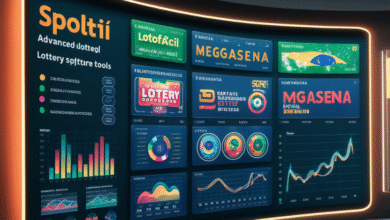Skip the Games: The Definitive Guide to Streamlined UX and Efficient Engagement

In the modern digital landscape, user attention is the most valuable currency, and every moment spent navigating unnecessary interactive elements can erode that value. “Skip the Games” encapsulates a philosophy that prioritizes efficiency and clarity, ensuring that digital experiences remain focused, purposeful, and frictionless.
What Does “Skip the Games” Mean? A Strategic Principle
“Skip the Games” refers to the deliberate elimination of superfluous interactions such as excessive animations, forced mini‑games, and distracting gamification from digital interfaces. Instead, it champions:
-
Streamlined interfaces that guide users directly to their goals
-
Minimal distractions, enhancing task completion speed
-
Intentional inclusions only where they add genuine value or delight
Why Embracing “Skip the Games” Enhances User Experience
1. Maximizes Productivity and User Efficiency
By removing poorly timed pop‑ups, onboarding mini‑games, or unnecessary visual detours, we ensure users complete tasks like submitting forms, viewing content, or checking out without friction or cognitive overload.
2. Reduces Cognitive Load
Simplicity fosters understanding. Removing distractions allows users to focus on essential actions, improving comprehension and retention.
3. Increases Trust and Satisfaction
Clean, predictable experiences build trust. Users feel respected when their time isn’t wasted chasing superfluous interactions or delight mechanics that don’t serve the core objective.
4. Boosts Accessibility and Inclusivity
Complex animations and reflex‑based mini‑games can pose barriers to users with disabilities or older audiences. “Skip the Games” ensures everyone can access content equally, regardless of physical or cognitive ability.
Core Strategies to Implement “Skip the Games” Effectively
Conduct Behavioral Mapping
Identify common user pathways and remove detours like forced games or interstitial interactions—that interrupt progress. Design experiences around user intent.
Prioritize Clarity in Interface Design
Use clear labels, concise calls-to-action, and clean layouts. Every element present should serve a purpose or support a user goal.
Use Gamification Purposefully
If gamified elements are included such as progress bars or badges they must:
-
Reflect real achievements
-
Enhance understanding or motivation
-
Be optional and nondisruptive
Continuously Gather Feedback and Iterate
Use user testing to identify frustration points and refine the interface. Data should drive removal of unnecessary features, not assumptions.
“Skip the Games” in Action: Practical Use Cases
E-commerce Checkout Flow
-
Remove interactive sliders or mini polls during purchase.
-
Display order summary clearly, with focused CTAs like “Proceed to Payment”.
-
Skip “play-to-win discounts”; opt for transparent, upfront offers.
Onboarding Experience
-
Favor guided tours or tooltips over forced gamified walkthroughs.
-
Let users skip optional games or tutorials with single-click opt-outs.
-
Focus on clarity highlight key features without distraction.
Educational Platforms
-
Replace interactive but time-consuming games with progressive questions or guided exercises that tie directly to learning goals.
-
Enable learners to bypass unnecessary quizzes or animations if they prefer a straightforward study path.
Enterprise Dashboards
-
Present key metrics and insights without animated infographics that slow load times.
-
Avoid mandatory interactive tutorials; instead, offer concise written tips.
Balancing Engagement with Efficiency
-
Strategic Delight: Simple animations (e.g., button feedback) can enhance UX if they’re brief and purposeful.
-
Optional Gamification: Offer gamified progression as a bonus not a barrier. Let users choose their engagement path.
-
A/B Testing: Compare streamlined vs. gamified flows. Measure task completion rates, bounce rates, and satisfaction to inform design decisions.
Benefits Summarized
| Advantage | Impact |
|---|---|
| Faster Task Completion | Users achieve objectives quickly with minimal distractions |
| Lower Cognitive Load | Simplified design reduces mental effort and confusion |
| Improved Accessibility | Inclusive designs cater to a broader, more diverse audience |
| Enhanced Trust | Users appreciate transparent experiences without manipulation |
| Optimized Performance | Fewer animations and scripts result in better loading and smoother use |
Conclusion: The Power of “Skip the Games”
Implementing “Skip the Games” is about making every digital interaction meaningful. It’s a commitment to user-centric design that values efficiency, transparency, and accessibility over gimmicks. When we prioritize purpose over performance, audiences respond with increased engagement, trust, and satisfaction.
Embrace clarity, respect user time, and strip away unnecessary complications your users will thank you with loyalty and continued interaction.



